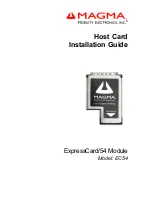
simply carry the mobile receiver laptop as far down the street or around the building as you can
go without losing significant signal strength.
If possible, you should be aware of the types of networks being used by the companies on the
floors above and below you, so that you can work together in harmony. With wireless networks,
security is very important and if you communicate with those around you, you are better
prepared to select the right channels, as well as the best location for access points.
Factors Affecting Range
Although access points can transmit signals up to 60 feet away in an area with many walled
barriers or as much as 500 feet away in a large open area, the range is affected by the
following factors:
•
Building materials, such as steel and drywall, can shorten the range of the radio signals.
•
Physical layout of the area can interfere with the signals and cause them to be dropped.
•
Electronic noise from cell phones, microwave ovens, or other devices on the same
frequency can interfere with the transmission of the signals.
•
Range is inversely proportional to data rate, so the faster that the signals are sent, the
less distance they will travel.
Taking these factors into consideration when you survey the site for your WLAN is key to
providing all of your users with undisturbed mobile connectivity. Using multiple access points will,
of course, reduce the impact of these factors if your area has dividing walls throughout.
Stronger Security
Although wireless networks are easy to use, the main issue lies with security. Even if you
enable the security settings defined in the 802.11b standard, as well as the security settings of
your hardware, your network is still vulnerable. There are a few things you can do to make it
more difficult for outsiders to access your network:
•
Change the default network name of your WLAN. Every manufacturer's default settings
are public knowledge.
•
Do not allow the name of your network to be broadcasted by your access points. This
makes it more difficult for hackers to identify your network.
•
Enable Wired Equivalent Privacy (WEP) encryption, which is the same security feature
used by online shopping websites.
•
Change your encryption keys as often as possible. Temporal Key Integrity Protocol
(TKIP), which is being developed by a IEEE task group, will change the keys
automatically.
•
Enable MAC address filtering so that each access point can generate a list of approved
MAC addresses for your WLAN.
•
If you have a small network, use virtual private network encryption for additional security.
If you have a large network, you may want to install a gateway between your access
points and network clients.
2.Software Installation
Installing Drivers and Intel(R)
PROSet Software
See the instructions for your operating system:
Содержание WM3B2100
Страница 45: ......






































